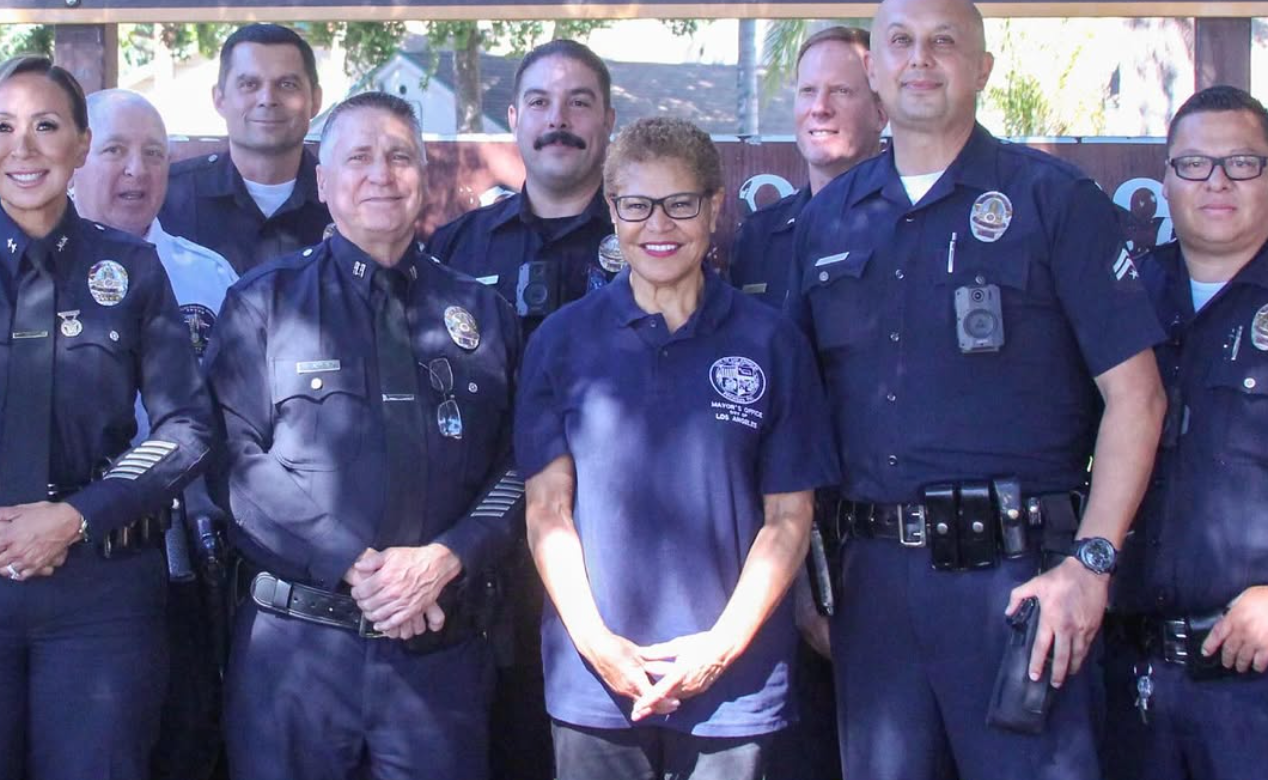Earlier this month, Mayor Karen Bass issued Executive Directive No. 14 ordering city departments to accelerate LAPD hiring by modernizing the recruitment process. On its face, the move signals City Hall’s continued prioritization of police staffing, but it also raises serious questions. Why rush to expand the force at the very moment when Los Angeles faces a massive budget crisis, when violent crime is at historic lows, when police liability payouts are draining city coffers, and when Los Angeles’ unarmed crisis response program is demonstrating cheaper, safer, and more effective results?
The City of LA entered the year with a budget deficit that ballooned from $600 million to nearly $1 billion, prompting city leaders to plead with the state for a bailout. Controller Kenneth Mejia warned repeatedly that the shortfall is not just the result of the devastating fires that hit Los Angeles this winter but of years of overspending, depleted reserves, rising payroll costs, and mounting liability payouts. That fiscal pressure makes new police hiring especially costly, since officers are among the city’s highest-paid employees and every new class compounds long-term pension and healthcare obligations. Mejia’s dashboard shows that in recent years the city paid out nearly $385 million on police-related claims, including $183 million for civil rights and excessive force, $97 million for traffic collisions, and tens of millions more for labor and professional negligence cases. These settlements alone rival the budgets of entire city departments, and every additional officer hired increases the city’s exposure to the same risks.
Proponents of police expansion often argue that more officers are needed to fight rising crime, but LAPD data and independent reporting tell a different story. Violent crime has been steadily falling, with homicides and shootings down sharply in the last two years, and the city is near multi-decade lows. What makes this trend even more striking is that it has happened while LAPD staffing is at its lowest level in more than two decades and police stops have dropped dramatically. Between 2019 and 2022, pretextual stops fell by over 85 percent, and contrary to warnings that this would lead to chaos, the city saw no increase in gun crime, property crime, or homicides. In fact, many neighborhoods most heavily policed in the past are now experiencing both fewer stops and fewer homicides. These outcomes directly challenge the narrative that more policing produces more safety, suggesting instead that Los Angeles is safer with fewer officers and less aggressive enforcement. The push for more hiring, then, is not rooted in a clear crime emergency but rather in political optics and institutional momentum.
At the same time, Los Angeles has begun scaling a different model of public safety that directly undercuts the rationale for more armed officers. The city’s Unarmed Model of Crisis Response deploys trained civilian teams to handle 911 calls involving mental health, substance use, welfare checks, and other nonviolent crises. The program has handled thousands of calls successfully, with the vast majority resolved without any police involvement. Not only does UMCR reduce the risk of violent escalation, it also costs far less than sending armed LAPD officers. Investing in this model could simultaneously improve safety and relieve the city’s budget.
Mayor Bass’s executive directive stresses efficiency in hiring and removing bureaucratic bottlenecks but does not explain why expansion is fiscally or strategically necessary at this moment. The adopted budget already acknowledges that if the LAPD actually reaches its hiring targets, the city will need to find nearly $10 million in additional interim funding just to cover salaries. The directive seems to double down on a police-first strategy even when the financial, safety, and policy arguments point in the opposite direction.

